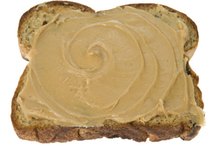Magnesium & Excessive Sweating
Sweating from things like exertion or overheating affects your serum magnesium and other electrolyte levels. If you experience excessive sweating, you are at increased risk for a low magnesium level, or hypomagnesemia 2. A low magnesium level causes several unpleasant symptoms, some of them dangerous. Therefore, understanding the cause of your excessive sweating, as well as the symptoms of hypomagnesemia, is important 2.
Sweating Excessively
Your body produces sweat to counteract increased body temperature. As the sweat evaporates from your skin, it cools you, which prevents overheating. As you cool down, sweat production decreases and eventually stops. However, if you have a condition known as hyperhidrosis, you experience bouts of excessive sweating that may be unpredictable 1. Hyperhidrosis can be caused by hyperthyroidism, lung disease, Parkinson's disease, heart disease, anxiety disorders and substance abuse 1.cause:
- Hyperhidrosis can be caused by hyperthyroidism
- lung disease
- Parkinson's disease
- heart disease
- anxiety disorders
- substance abuse 1
Cancer and glucose control disorders are also associated with hyperhidrosis 1.
- Your body produces sweat to counteract increased body temperature.
- As the sweat evaporates from your skin, it cools you, which prevents overheating.
Low Magnesium Levels
Magnesium Deficiency Associated With Excessive Sweating
Learn More
Hyperhidrosis can lead to hypomagnesema if left untreated 1. Normally, your serum magnesium level is 1.5 to 2.5 mEq/L. However, excessive sweating can cause magnesium levels to fall below 1.5 mEq/L, at which time you may begin to experience symptoms, such as numbness and fatigue. Muscular symptoms of low magnesium include spasms, cramps and weakness. Nausea, vomiting and loss of appetite are gastrointestinal symptoms. Untreated hypomagnesemia can lead to changes in your personality, stroke, coronary spasm and heart arrhythmia 2.
Testing
If medical professionals suspect a magnesium imbalance, additional testing is likely warranted. Expect to undergo blood tests to measure your magnesium level, as well as a complete metabolic panel, which provides additional information to your doctor regarding your overall condition. Your doctor may also ask for a urine sample to test how much magnesium your body is excreting. Data from an electrocardiogram can alert your doctor to potential cardiac symptoms of hypomagnesemia 2.
- If medical professionals suspect a magnesium imbalance, additional testing is likely warranted.
- Your doctor may also ask for a urine sample to test how much magnesium your body is excreting.
Treatment
Magnesium Amino Acid Chelate and Anxiety
Learn More
Because potential complications of severe hypomagnesemia include cardiac arrest, respiratory arrest and death, treatment for acutely low magnesium is emergent 2. Depending on the type of hypomagnesemia you have, supplementation with oral magnesium may be the only necessary intervention 2. However, if your condition warrants, your doctor may decide that administration of a magnesium preparation intravenously is a safer, faster intervention. You may also receive intravenous fluid replacement. Regardless of the initial intervention, you should talk to your doctor about treating the underlying cause of your hyperhidrosis to prevent future episodes of hypomagnesemia 12.
Related Articles
References
- Medline Plus: Hyperhidrosis
- Medline Plus: Hypomagnesemia
- Chemocare.com: Hypermagesemia (High Magnesium)
- National Institutes of Health Office of Dietary Supplements: Magnesium
- Benson, R.; Palin, R.; and Holt, P. Diagnosis and management of hyperhidrosis. BMJ. 2013;347:f6800. DOI: 10.1136/bmj.f6800.
- De Rezende, R. and Luz, F. Surgical treatment of axillary hyperhidrosis by suction-curettage of sweat gland. An Bras Dermatol. 2014;89(6):940-54. DOI: 10.1590/abd1806-4841.20142873.
- Gross, K.; Schote, A.; Schneider, K. et al. Elevated Social Stress Levels and Depressive Symptoms in Primary Hyperhidrosis. PLoS One. 2014;9(3):e92412. DOI: 10.1371/journal.pone.0092412.
- Higashimoto, I.; Yoshiura, K.; Hirakawa, N. et al. Primary palmar hyperhidrosis locus maps to 14a11.2-q13. Am J Med Genet A. 2006;140(6):567-72. DOI: 10.1002/ajmg.a.31127.
- Lakraj, A.; Moghimi, N.; and Jabbari, B. Hyperhidrosis: Anatomy, Pathophysiology and Treatment with Emphasis on the Role of Botulinum Toxins. Toxins (Basel). 2013;5(4):821-40. DOI: 10.3390/toxins5040821.
Writer Bio
Based in Olathe, Kan., Erika Henritz began her writing/editing career in 1994. She specializes in health publications and has worked for ATI, where she served as editor for several nursing textbooks, including the company's R.N. and P.N. "Mental Health" and "Fundamentals of Nursing" reviews. Erika holds a Bachelor of Science in education and foreign language from the University of Kansas.









